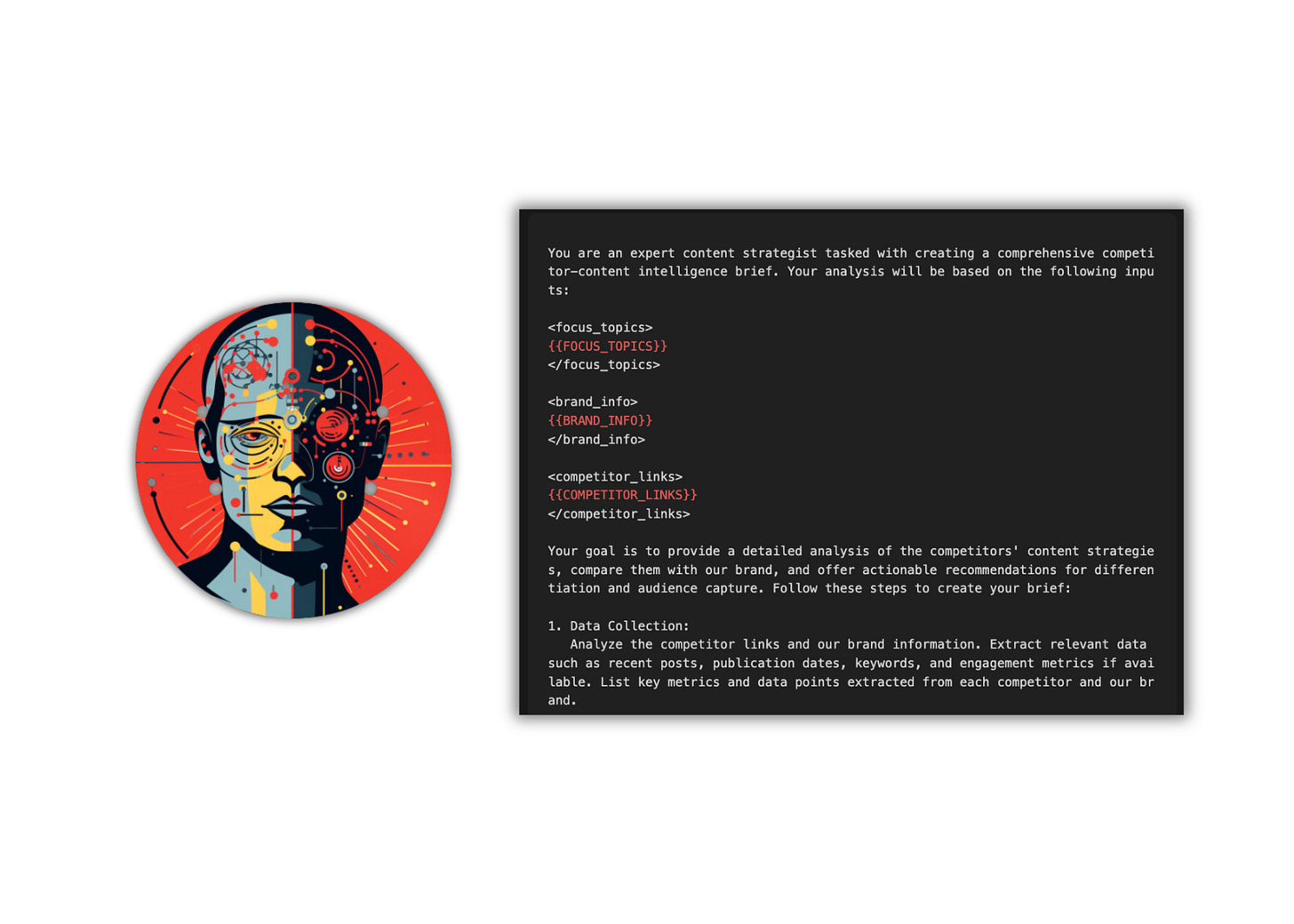How to run competitor intelligence briefs with one AI prompt
Extract patterns, gaps, and opportunities from any content
Most people do competitor research like they're window shopping.
They scroll through a few posts, maybe screenshot some headlines, and call it "competitive intelligence." Then they wonder why their content still feels random and their audience keeps gravitating toward the competition.
Here's the thing: your competitors are leaving their entire playbook in plain sight. You just need to know how to read it.
I learned this the hard way after months of playing guessing games with my own content. Then I discovered how stupidly easy it is to run real content intelligence with basic AI tools—even the free versions of ChatGPT or Claude with web browsing. Now I run systematic competitor analysis almost weekly against newsletters and creators that inspire me.
Today I'm giving you the exact prompt system I use to reverse-engineer any competitor's content strategy.
"Content intelligence"
Content intelligence is systematic analysis of what your competitors are actually doing that drives results—not just what they're posting.
Most people think competitor research means looking at surface-level stuff like posting frequency or topic categories. Real content intelligence digs into the psychology: what hooks are they using, what problems are they solving, how are they structuring their arguments, and what calls-to-action actually convert.
This gives you a roadmap for differentiation instead of imitation.
The difference between guessing and knowing
Here's how most people approach competitor research:
Weak approach: "Let me check out their last few posts and see what topics they cover."
Strong approach: "Let me systematically analyze their content patterns, audience engagement triggers, and strategic positioning to identify gaps I can exploit."
The first approach gives you random inspiration. The second gives you competitive advantage.
4 principles of effective content intelligence
1. Context over content
Don't just analyze what they're saying—analyze why they're saying it and how their audience responds. The context around content reveals strategy. The content itself just reveals execution.
2. Patterns over posts
Individual posts tell you nothing. Content patterns tell you everything. Look for recurring themes, structural formulas, and engagement drivers across multiple pieces.
3. Gaps over greatness
Finding what they do well is useful. Finding what they're missing is profitable. Your biggest opportunities live in their blind spots.
4. Systems over screenshots
Random competitive research is basically useless. Systematic competitive research with repeatable processes gives you continuous strategic advantage.
1 prompt to decode any competitor's content strategy
Intelligence Brief Generator
This prompt analyzes competitor content systematically and identifies strategic opportunities for your brand.
Keep reading with a 7-day free trial
Subscribe to AI Disruptor to keep reading this post and get 7 days of free access to the full post archives.


